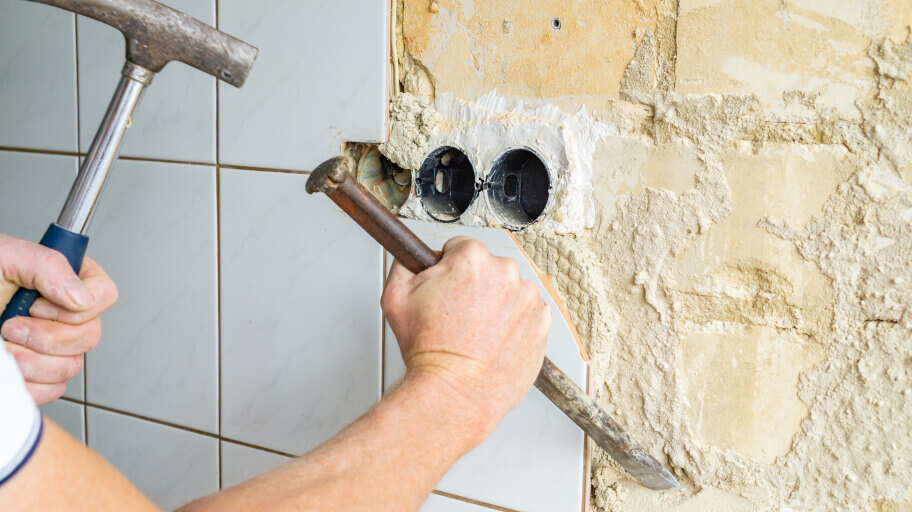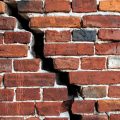
Tiles are a popular choice for walls in kitchens and bathrooms, as they are durable and easy to maintain. Eventually, however, wear and tear may show, or the tiles may simply become outdated. So, the best way to breathe new life into a said tiled room is renovating.
Well, this post will focus on exactly that, so read below to learn how to remove tiles from walls the easy way and without causing any significant damage to the surface underneath.
Is it difficult to remove wall tiles?
It doesn’t require too much skill to get to the wall or plasterboard and remove the tiles, but you should brace yourself with some patience. Be aware that sometimes, you may need to repair the wall afterwards to achieve that smooth finish before retiling the surface with your new sleek and trendy-looking tiles.
On that note, the more time and effort you invest in removing the tiles, the less time you’ll spend on preparing the wall afterwards, that’s for sure.
Tools and materials you’ll need
The good news is that removing tiles from walls doesn’t call for an extensive DIY experience. Depending on the project’s size, the work may take a day or two, and you should know that these 48 hours can be messy! Having the right tools and being mentally prepared should be enough to get the job done.
The tools and materials you may need for the job are:
- Safety glasses
- Hard safety gloves
- Dust mask
- Hammer
- Pry Bar
- Blade scraper
- Saw or grout cutter
- Tile cutter
- Utility clippers or pliers
- Screwdriver or chisel
- Utility knife
- Large bin bag
- Hot air gun (optional)
Preparation measures for the work area
Consider protecting any objects and surfaces nearby and cover areas that shards of broken tiles can damage. Regardless of whether you are removing tiles in the kitchen or the bathroom, here are the preparation steps you need to follow:
- If you remove your bathroom tiles, then cover the bathtub and all the porcelain fittings and fixtures.
- In the kitchen, take all the removable light furniture out of the room and protect the countertops, bulky appliances and any kitchen shelves with a sturdy material like cardboard or bubble wrap.
- Cover any drains and sink holes (in both the kitchen and bathroom), too, against clogging up, as dust and small particles can easily end up in the pipework.
- Don’t forget to protect the flooring, as well, be it laminate, hardwood or natural stone. Just place an old blanket or rug that you no longer use on top to add some extra cushioning because heavy shattering tiles may damage the surface.
- It’s good to mention here that if your refurbishing project involves the removal of tiled splashback, then it’s a good idea to cut the power off to any electrical sockets on the wall. The last thing you’d want is to injure yourself, right?
Well, you’ve prepared your working area. Now prepare your protective equipment. Wear hardy working gloves against accidental cuts, knee pads, goggles and a protective mask against the dust that will inevitably fly around.
Why struggle with laborious tiling projects yourself?
Book a professional handyman instead!
You can book our handyman services in Melbourne, Sydney, Brisbane and Perth!
How to remove wall tiles (Step-by-step)
In short, the whole process goes in three steps – removing the grout, the tiles and the adhesive.
Let’s get down to the job, then, shall we?
1. Remove the grout
Removing the grout is probably the most time-consuming part of the job, but when done well – it will save you the daunting effort of breaking the tiles piece by piece later. A heat gun or a blow dryer will be helpful to soften the grout.
Then, use a utility knife to scrape it away and make sure you remove it down to the wall. This way, you will be isolating each tile to then pop out more easily without causing further damage to the wall. You want to work as swiftly as possible to leave the wall behind nice and even.
2. Remove the tiles from the walls
For a whole wall of tiles, start by tapping the corners of a few tiles to locate any loose edges. This will be your starting point. Then, slide the chisel behind the tile and give it a light hit with the hammer to apply pressure and get the tile loosen from the adhesive. This way, you can take them down without breaking them.
The first tile is usually the hardest to take out, but the other tiles’ exposed edges will make the rest of the job less strenuous once removed. To note here, the above tips will help you remove tiles from the plasterboard without breaking them.
3. Break the tiles
In the unlucky scenario, where the tiles are directly set into the mortar, you would have to break them into bits. Wear a protective eye mask – porcelain tiles may break into extremely sharp pieces. Try to break the tiles from the side with a hammer and chisel to reduce the number of shards. Work in horizontal lines.
4. Clear off the adhesive and any remains
To get all the adhesive and grout off the wall might look like an impossible job, but you may use a cold chisel, utility knife or tile cutter to remove the remains. You would want to ensure that the wall or plasterboard is flat and even for laying the new tiles. Also, snip off the spacer lugs with utility clippers or pliers.
You may find the whole process daunting and potentially hazardous. However, if unsure that you can complete the job the DIY way with the expected result, get professionals involved to save time.
Need help retiling your walls?
Why not entrust the job to the experts at Fantastic Handyman?
You can book our handyman services in Melbourne, Sydney, Brisbane and Perth!
Takeaways
- Preparation – both mentally and tool-wise is the way to go when deciding on removing tiles from walls the DIY way.
- With the help of a hammer, chisel and protective clothing, you are ready to scrape your bathroom or kitchen wall off the old unsightly tiles.
- Never underestimate the importance of protective wear and allow yourself enough time to complete the job without becoming a nervous wreck.
- And if you feel out of your depth retiling your freshly prepared wall, book a professional to lay the new tiles and enjoy your home’s new look.


